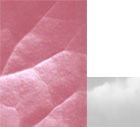 |
Topics
Archive
Search
Impressum

|

|
|
|
Feasibility
Study on the Support of the Information Requirement in Compliance
with §22 BiozidG/ChemG on Alternative Measures for the Minimization
of the Use of Biocides
|
| |
| |
|
Commissioned by:
Federal Environmental Agency, Berlin, Germany
|
| |
| |
Carried out by:
Stefan Gartiser, Hydrotox GmbH, Freiburg, Germany
Antonia Reihlen, Ökopol GmbH, Hamburg, Germany
Dr. Klaus Schneider, FoBIG GmbH, Freiburg, Germany
Horst Kremers, Berlin, Germany
|
| |
| |
|
Duration:
April 2004 - October 2005
|
| |
| |
| |
| Background |
| |
On 28 June 2002, the German Biocide Law
went into effect. This regulates the implementation of the Biocide
Guideline 98/8/EG into the Chemicals Legislation (ChemG). The latter
prescribes under Section §22, Paragraph 1a), Point 5, that the
Licensing Authorities for biocides shall make "Information on
the physical, chemical and other measures as alternatives or for minimizing
the use of biocidal products available to the public.
In the framework of the present project a feasibility study should
be completed in support of this information obligation. The aim is
to bring together the very broadly dispersed knowledge and provide
the basic foundation for a planned information system, whereby the
different needs for information and advice of the future users shall
be taken into account. In a second project phase suggestions for additional
flanking measures toward the promotion of alternatives to minimize
the use of biocides should be worked out.
The present research proposal is complementary to the project currently
being supported by the Bundesanstalt für Arbeitsschutz und Arbeitsmedizin
"Beschreibung der ordnungsgemäßen Verwendung und einzuhaltender
guter fachlicher Praxis bei der Verwendung und Entsorgung von Biozid-Produkten"
(F 1929), which is being worked on by the same cooperation partners.
|
| |
| |
| |
| |
| Objectives |
| |
A broad base of background basic knowledge
should be prepared for all 23 relevant biocide-product groups, in
order to be able to establish areas of emphasis as regards potential
alternative measures. The sources for information involving the areas
of use and spectra of active substances of biocide products include
the Emission-Scenario-Documents of the EU (EUBEES), the lists of the
Second Review-Regulation (EG) Nr. 2032/2003 of the Commission, as
well as diverse overview articles of the various national agencies.
Furthermore, a systematic compilation of available biocide-free alternatives
in the various branches/product categories is to be completed, whereby
a demonstration of utility receives a high priority. Examples of this
include alternatives to preventative chemical wood treatment after
DIN 68800 or thermal treatments against wood destroying insects. In
addition, alternative/integrated measures for minimizing the use of
biocides are to be worked out.
Thus, among other points, the current discussion on the household
use of disinfectant cleaning agents or other disinfectants should
be reviewed and summarized. An essential aspect here is the description
of the "state of the art" in the individual branches/areas
as far as these can be obtained from the BREF-documents of the EU
and the national, as well as international standards and guidelines.
Information is to be based on searches of the published literature,
databases and the internet, as well as enquiries of manufacturing
associations, universities and professional experts from industry,
research and agencies.
The substitution of biocides of high concern with better rated biocides
on the basis of comparative evaluation of the constitutent substances
is however not a primary goal of the first project phase.
Suggestions for a consumer-oriented information system are to be worked
out, whereby a more detailed, intensive proposal can only be provided
exemplarily for a few branches/product categories. Initially, a survey
of the relevant sources (internet, databases, Standards, labels, institutes,
industrial associations, consumer organisations, environmental protection
groups, professional experts, etc.) will be prepared. From this, a
plan is to be developed, according to which these sources can be systematically
and reiteratively evaluated and the data fed into the infomation system.
Hereby, methods of quality management should be incorporated.
As an additional part of the planned information system there should
be included information about appropriate experts who could carry
out a specific on-location consulting for consumers or users. In order
to avoid any misuse of the description as an "expert", however,
concepts for an accreditation procedure for suitable experts must
be worked out. In the framework of the project a systematic survey
of existing advisory structurees should be carried out and they should
be evaluated as to their usefulness.
The necessary infrastructure of an appropriate information system
should in its essence be derivable from the basis knowledge worked
out, taking into account the existing structures. Through an interdisciplinary
approach capabillities of information technology will be linked with
communication and marketing strategies, so as to effectively reach
the target groups. In the framework of the project the required capacity
and the costs for the establishment of the information system (working
up the data, as well as setting up, updating and operating the information
system) are to be estimated. In addition, proposals for the financing
of the information system are to be worked out.
In a second project phase the factors and appropriate instruments
to promote alternative measures (innovation system) are to be described
and internal workshops held with the involved players. In addition,
concepts for informing the public should be developed, in order to
achieve a flow of information to the consumers and users of biocides. |
| |
| |
| Contact |
| |
|
| Dirk Jepsen |
 |
|






